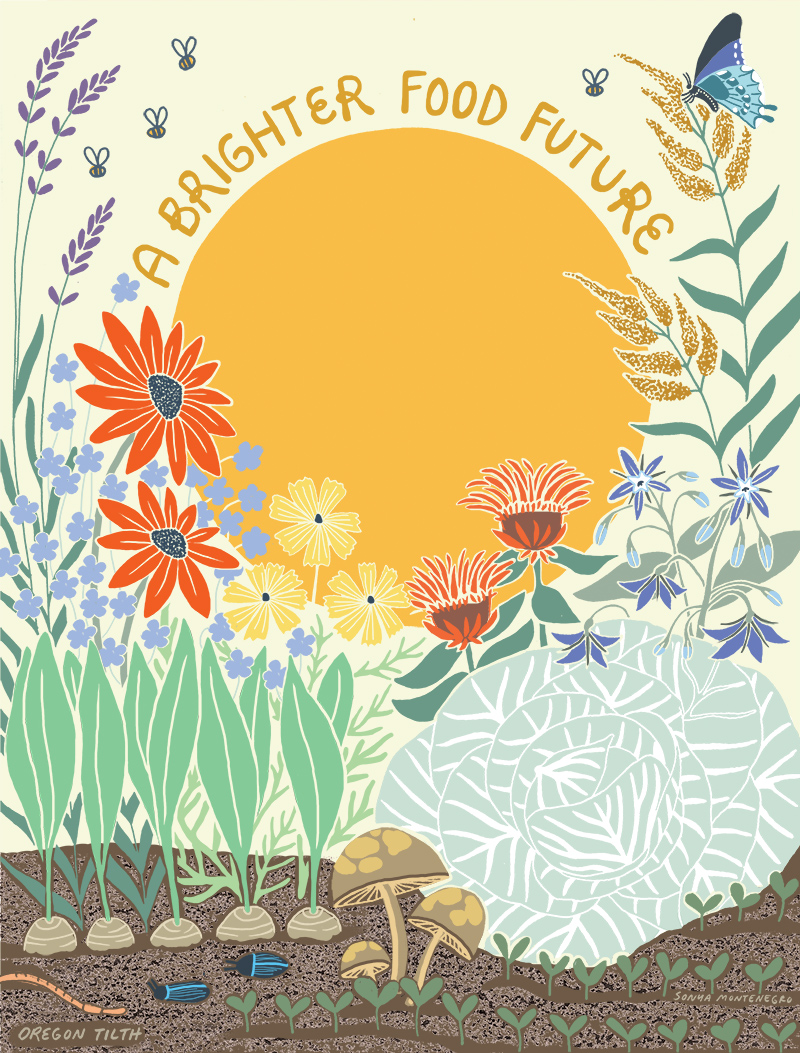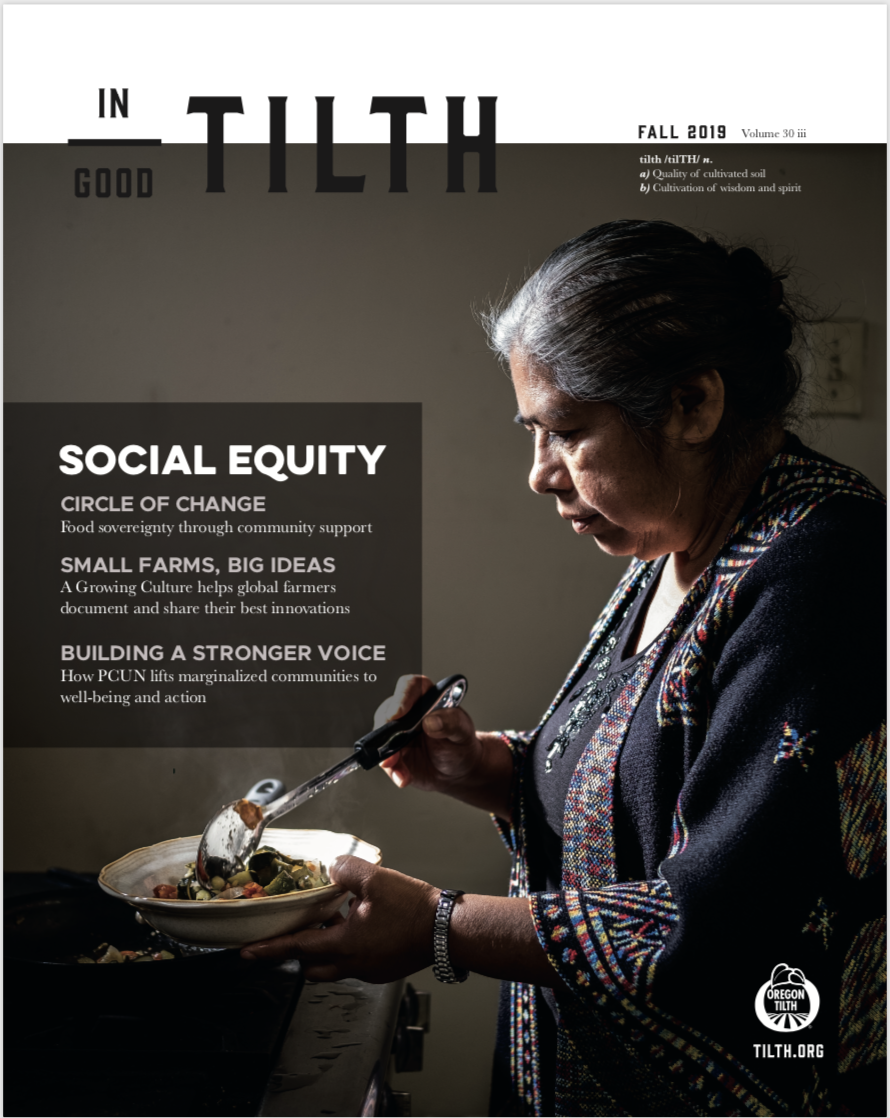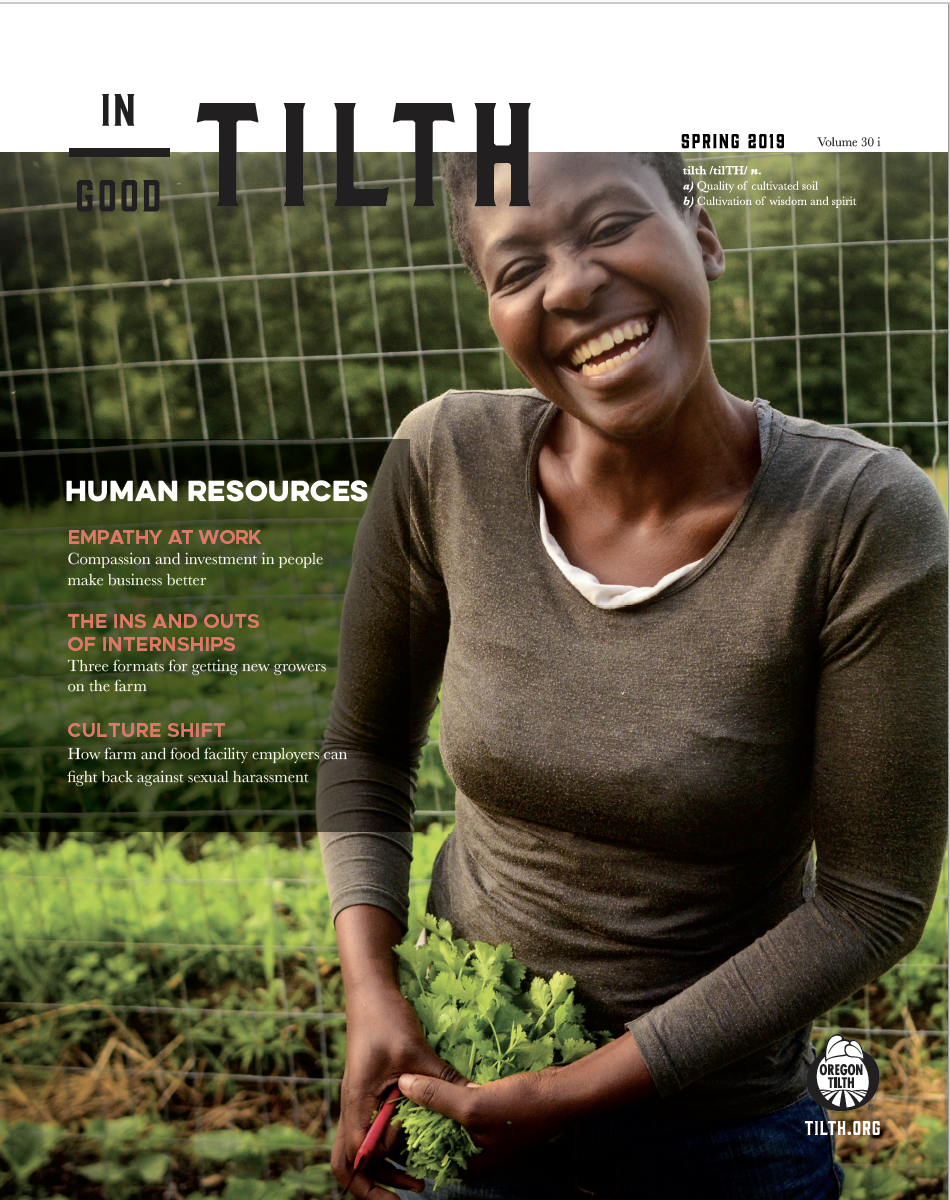What makes for a great bite of food? The answer is a bit of a chicken-and-egg proposition. If one is interested in eating good food, do you look for great recipes or on finding the best food ingredients? Maybe both? Whichever the answer, aren’t you ignoring many other important considerations?
What about how the food was grown or raised? The impact on the environment? The farm worker? Animal-welfare concerns? The local community? The food’s nutritional value? Hunger and food insecurity issues?
Where does the story end? That’s not how Cooking Up a Story began. But, it became a central core of the untamed, circuitous route we came to follow.
The birth of a non-cooking internet TV show about food
Cooking Up a Story (CUPS) launched online in May of 2006. Production started earlier in January after a few months of research and preparation.
The show began as a way of sharing stories on the internet about our food and the people who grow, raise and process it. In certain respects, Rebecca and I were foodies all our lives. We are both careful as to what we eat. We both believe strongly in social justice and protecting the environment. We both enjoy food that tastes great and often that means fresh, seasonal, local and produced on smaller farms. We both believe in organic food and in protecting the integrity of the organic label. Our kids, who are now grown, were raised on organic milk, because we understood the difference and because that was one food that they consumed on a daily basis. But despite our strong beliefs, CUPS was never about us. It was always about the people we filmed. It was their personal stories, their first-hand information that we were privileged to share with the world.
During the summer of 2007, Rebecca was filming a story about an organic farmer, Laura Masterson of 47th Avenue Farm and her CSA. It was the first time that I had heard the term “sustainable agriculture” being mentioned. Laura was talking about the importance of organic farming but that it represented more than just the things that you don’t do. To her, growing good food also meant taking care of the soil through proper crop rotation, and growing a diversity of crops for the bees and other wildlife to enrich the local ecosystem. “Sustainable” was a large umbrella that attempted to capture the spirit behind organic agriculture, beyond a list of strictures that defined which practices (and chemicals) were allowed or prohibited. The term “sustainability” had not yet penetrated the mainstream. Over the ensuing years, sustainable agriculture, “living within our means,” meant that nature must be included in the overall cost ledger. Sustainability infers a sense of greater permanence, and that’s what makes it such a daunting proposition to achieve.
For me, chef Dan Barber brought the notion of sustainability full circle in his book, The Third Plate. His 10-year quest to find the tastiest foods brought him face to face with more than just the food itself. Local culture, cuisine, native ecosystems, and yes, farms that operated in a more sustainable fashion meant farming and ranching had to operate within inherent and natural limits. But, for those that were able to find the balance, there was a magnificence that occurred.
Recently, a friend from college was visiting and asked, “what were our favorite stories?” That’s extremely hard because we met so many remarkable people. Farmer Don Wachlin was one of our favorites. A born storyteller, he once said, “Farming is a crapshoot,” meaning there are so many variables and much of it outside the control of the farmer. The last time we saw him was at his final Fall Harvest celebration on his centennial farm in 2010. We were filming his pumpkin shoot as he was seated at the pneumatic controls, the old Blue Bird school bus resting barely in range of the canon. He watched the kids and adults enjoying the chance to be among the few to actually hit the target. A lovely man. Another favorite is Alan Kapuler. Trained as a molecular biologist, he’s an open-source, organic-plant breeder whose ideas about growing food push the boundaries of what’s possible. His greenhouse contains tall citrus trees that are supposed to only grow in tropical regions and his kinship garden layout shows the visual representation of related plants, planted next to each other for easy comparison. His daughter (and her partner Mario) have continued his lifetime of work — Peace Seedlings — growing a diversity of organic, open-pollinated crops for organic seed production. Another giant: Lon Rombough whose work with grapes and fruit trees was a local and national treasure.
What does it all mean?
Agriculture production is not rocket science. It’s far more complex. It doesn’t lend itself to a one-size-fits-all approach, especially in public policy. This is controversial and possibly polarizing, but I don’t see a future for industrial agriculture. It was built on the promise of cheap oil, and it predated our understanding of climate change (though there are still many in the political realm that vehemently deny its existence). How do we feed the world? My answer, in part, is by helping others to grow their own food and increasing access to fresh food. In the U.S., a big step forward would be to shift the Farm Bill subsidies toward the production of specialty crops and farmland conservation to help offset the higher price for producing food that is more eco-friendly and more humane. In the developing world, the greater challenge is to improve distribution of food to poor and widely dispersed populations.
A better question is this: How do we grow enough food that is more nutritious, resilient, and less dependent on natural resources to produce?
Farmers are not the problem; they are the only potential solution. Our food policies at the state and federal levels will require a dramatic shift toward smaller and more eco-friendly forms of farming. That’s easy to say, but how do we actually accomplish this? We don’t pretend to be the experts or to have the answers. We have only seen glimpses of the possibilities. Ranchers like Nicolette Hahn Niman and husband Bill Niman, who raise their herds on pasture and treat their livestock with respect. Frank Morton, a mid-size fresh-market farmer and organic-seed breeder, who grows a rich diversity of specialty crops (you know, the whole foods intended for human consumption). Agricultural warrior Vandana Shiva, who educates and inspires farmers around the world as she fights for social justice and against corporate control of the global food supply. The Culinary Breeding Network, a loose consortium of “plant breeders, seed growers, fresh-market farmers, chefs and produce buyers,” who have joined forces to increase the diversity of vegetable crops that are hardier, drought tolerant and packed with nutrition and flavor.
The future for Cooking Up A Story?
Ten years is a long time to be producing a show. Many of our videos are evergreen and will continue to be around for years to come. More recently, Rebecca has been focusing on drawing original illustrations, many which overlap the themes of our show. Being an independent small publisher, and striving to reach audiences with the highest common denominator content, stacks the odds against long-term economic survival. We need more authentic voices to document what is going on in the world around us. And, to create better ways for “public interest” oriented media to thrive. Cooking Up a Story is one of the first food-related video blogs on the internet and among the longest lasting, but we are not alone.
We both feel privileged to have travelled on this incredible journey of discovery, “bringing the people behind our food, to life.”



















